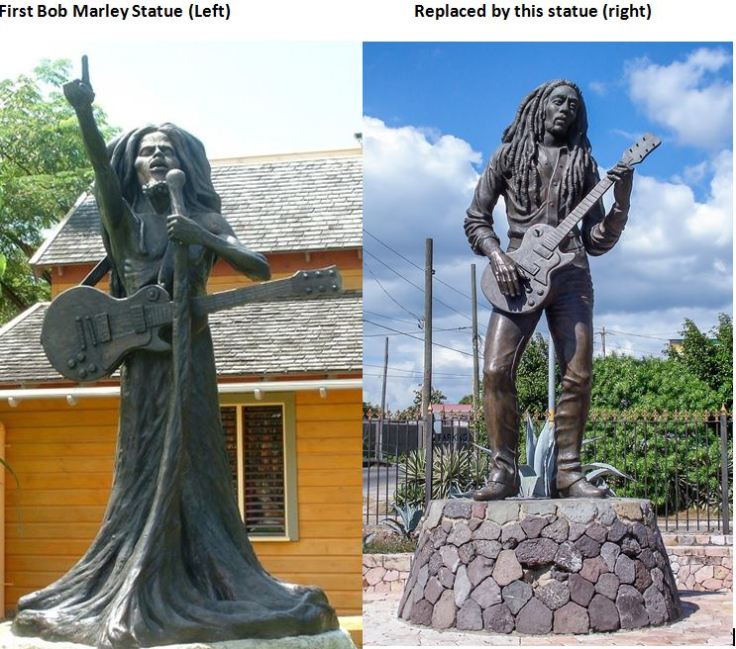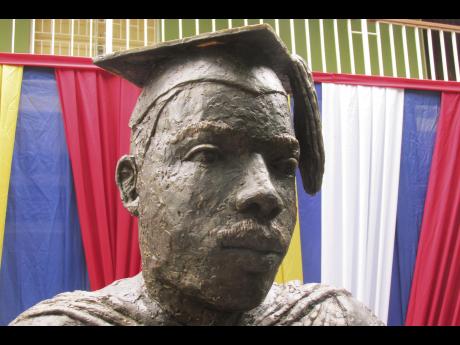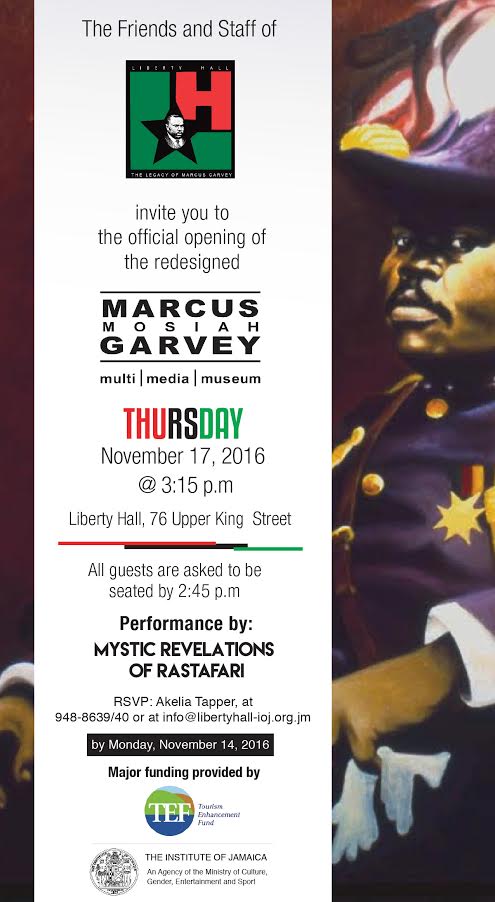Jamaican art critics can be very intolerant. Not just the professionals who arrogantly expect us to take as gospel their point of view. It’s also the amateurs who depend on the evidence of our own eyes to pass judgment about the value of art. Especially when it’s about public figures!
I remember the controversy over Christopher Gonzalez’s inventive sculpture of Bob Marley that the Government commissioned in 1981. Born in Kingston, Gonzalez was living in Atlanta. David Boxer, then chief curator at the National Gallery, was sent to check on the progress of the work. He immediately ‘sighted’ problems.

Bob was growing out of a tree root. Like a merman, the singer had no feet. Worst of all, the face looked nothing like Marley’s. When the sculpture arrived in Jamaica, angry reviewers comprehensively dissed it. They authoritatively declared, “Dat a no Bob.” The statue was a brilliant evocation of the spirit of Marley. But that’s not what the people wanted.
Neither did Bob’s family! Cedella Booker and Rita Marley insisted that the image was inappropriate. Edward Seaga, then prime minister, agreed. Alvin Marriott was commissioned to do a realistic sculpture, which stands (on feet) across from the National Stadium.
Gonzalez’s sculpture is now rooted at Island Village in Ocho Rios after languishing for many years in the National Gallery. It should be transplanted to The Edna Manley College of the Visual and Performing Arts. There it would inspire students to “be bright and out of order” – as a clever sign on the college campus advocates.
DEADLY REVIEWS
Two Fridays ago, a bust of Marcus Garvey, made by the renowned sculptor Raymond Watson, was unveiled at the University of the West Indies (UWI), Mona. The swift response of the amateur art critics was uncompromising: “Dat a no Marcus Garvey.” Some of the reviews I’ve heard are deadly: “Im look like im have cancer”; “It look like bees sting im pon im top lip”: “Im deh pon SlimFast”.

A Gleaner article by Paul Williams, published last Wednesday, records more responses: “‘Tek it dung,’ one woman said calmly. ‘That statue does not represent Marcus Garvey – that’s a fraud,’ pronounced an elderly Rasta, donning the colours of the Universal Negro Improvement Association (UNIA). With photos of Garvey, and sometimes using expletives, he ranted until way after the formalities were over.”
Edward Seaga, a former distinguished fellow in the School for Graduate Studies and Research at the UWI, could have given valuable advice about the politics of commissioning public monuments. A student of anthropology, Seaga fully understands the power of symbols. He knows that Garvey is the embodiment of Black Power, not just for Rastafari but also for the black majority.
As minister of finance, Seaga played a leading role in bringing home Garvey’s remains from the UK in November 1964. That was an eloquent political statement. Seaga was also instrumental in ensuring that Marcus Garvey was declared Jamaica’s first national hero in 1969. I’m sure Seaga would empathise with those critics who are distressed by Raymond Watson’s representation of Garvey.
MOTHER MARIAMNE SAMAD
 The worst thing about the image is not that it doesn’t look like Garvey. Most of us haven’t seen Garvey in the flesh. Mother Mariamne Samad, who is 94, is the only person at the ceremony who actually met Garvey. She was five years old and she remembers being at the corner of 132nd Street and 5th Avenue in Harlem when Garvey briefly spoke to her.
The worst thing about the image is not that it doesn’t look like Garvey. Most of us haven’t seen Garvey in the flesh. Mother Mariamne Samad, who is 94, is the only person at the ceremony who actually met Garvey. She was five years old and she remembers being at the corner of 132nd Street and 5th Avenue in Harlem when Garvey briefly spoke to her.
Our images of Garvey have been mostly defined by photographs. We trust that they are accurate. But long before Instagram filtering, photos have been touched up, often to remove melanin. At the unveiling, Professor Rupert Lewis, eminent Garvey scholar, declared in a conciliatory tone, “There are many images of Garvey that you can get from his 52 years.”
True! Unfortunately, Raymond Watson’s image of Garvey reveals nothing of the authority, passion and power of more full-bodied representations of our national hero. I wouldn’t go as far as cancer. But Garvey seems poorly. His posture conveys passivity. He looks like a weakling. Who approved this diminished portrayal?
The bust should be replaced with an image that inspires unequivocal admiration of Garvey’s accomplishments as an illustrious pan-Africanist rallying the black world to affirm pride in race. Perhaps the CHASE Fund could support the commissioning of a new sculpture for UWI. And Watson’s could be donated to Liberty Hall: The Legacy of Marcus Garvey. It would take its rightful place among the many images of Garvey archived there.
Under the visionary leadership of Dr Donna McFarlane, director/curator of Liberty Hall, the interactive museum has recently been redesigned by the brilliant creative team, Art on The Loose, based in Chicago. Marcus Garvey’s life story is told in inspiring words, sounds and images. It’s a completely engaging multimedia experience.

The best thing about the UWI monument is the Garvey quotation inscribed on its base: “What I write today may live with me, but when I die, my writing lives on; therefore, what you do or write must be so clear as to live on when you are gone, that others who may read it might get a clear conception of what you mean.” The UWI needs a lucid monument to Marcus Garvey that portrays a clear conception of the meaning of the man. Perhaps, next time, it will be a full-scale statue.

This statue does not represent Garvey it is a fake. Marcus does not look like that in his face. This artist has to wheel and come again.